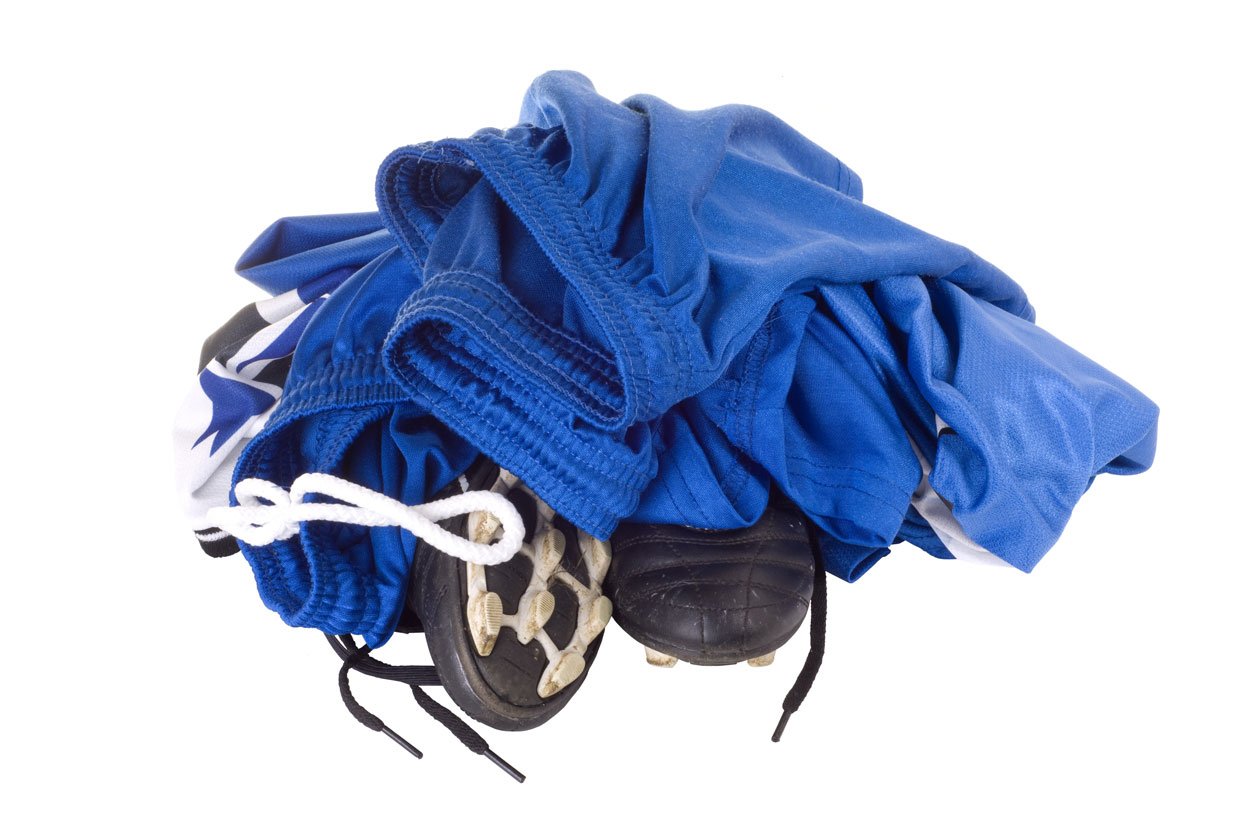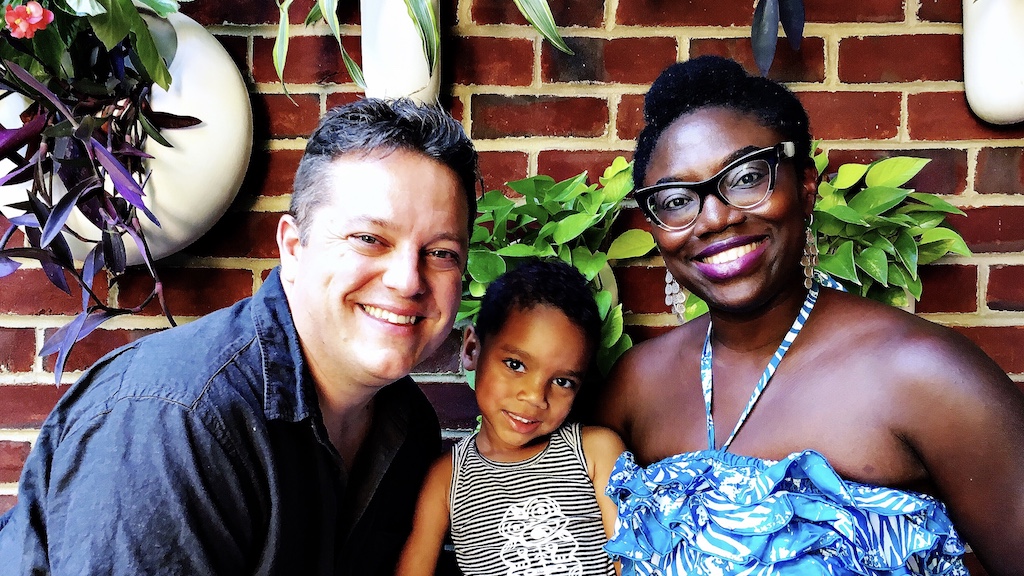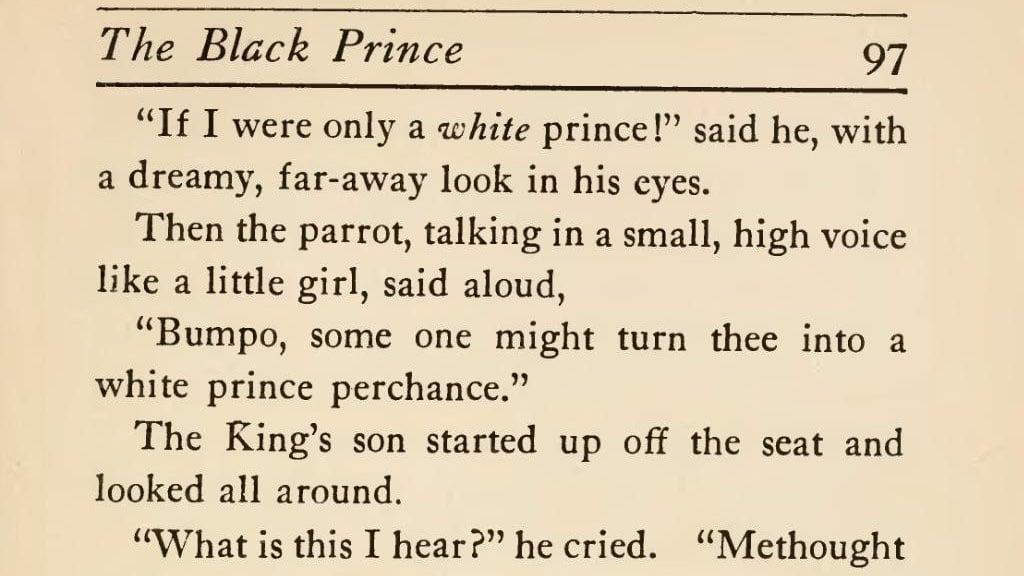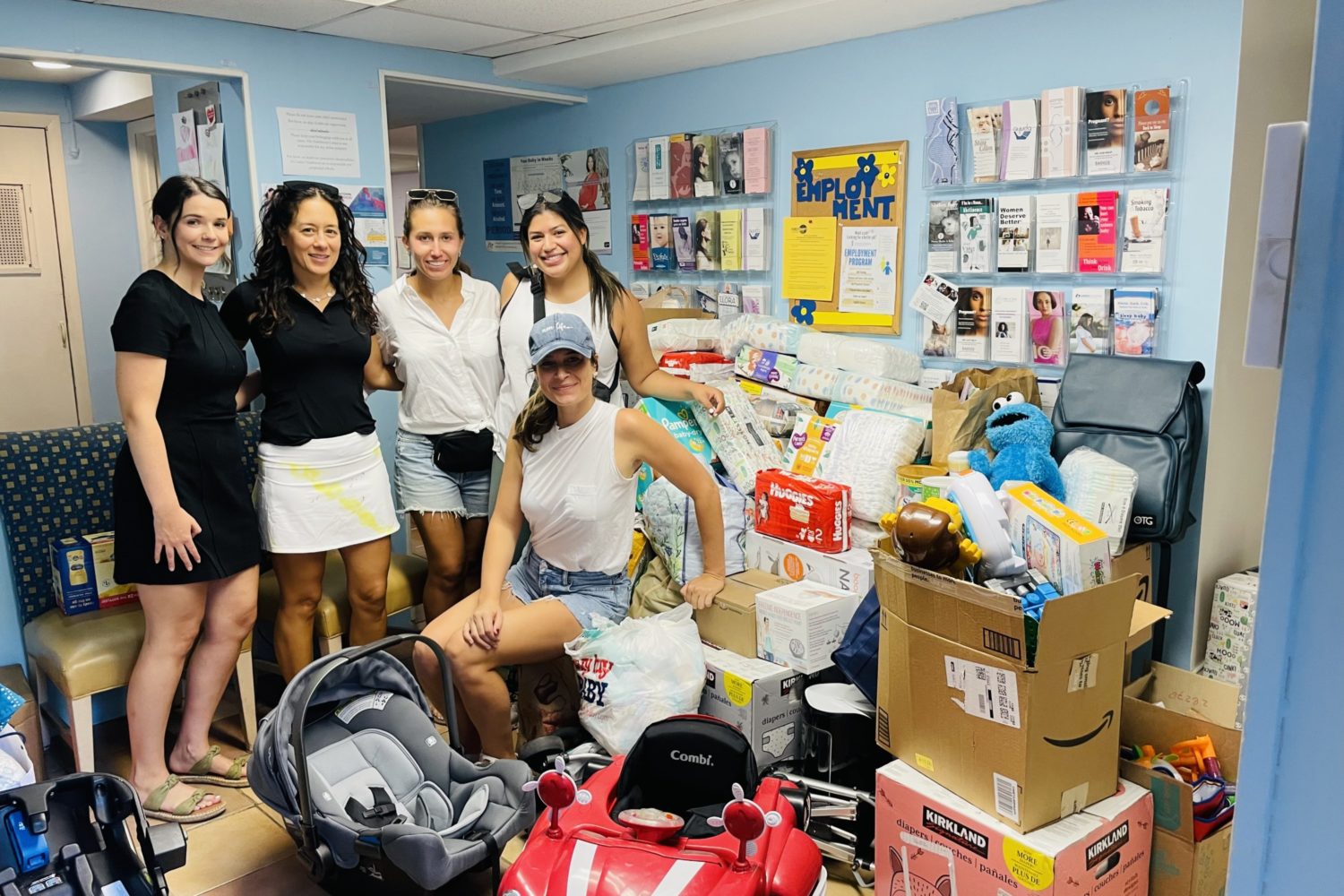Jill Pellettieri’s recent Washingtonian article “Should You Send Your Kids to Occupational Therapy?,” which ran in our February 2016 print issue with the headline “How to Hold a Pencil: And Other Things Occupational Therapy Might Teach Your Kids,” brought responses from occupational therapists. Here are their letters, along with a response to one from Pellettieri.
—
As a pediatric occupational therapist, I feel that the article “How to Hold A Pencil: And Other Things Occupational Therapy Might Teach Your Kids,” in the February 2016 edition of the Washingtonian does not adequately portray occupational therapy as a research-based profession with a broad and essential scope of practice.
Occupational therapy is defined as “the therapeutic use of everyday life activities (occupations) with individuals or groups for the purpose of enhancing or enabling participation in roles, habits, and routines in home, school, workplace, community and other settings” (American Occupational Therapy Association (2014). Occupational Therapy Practice Framework: Domain and Process (3rd ed.) American Journal of Occupational Therapy, 68 (Suppl. 1). S1-S48). Occupational therapists help individuals with and without disabilities to lead full and productive lives. Occupational therapy practitioners help children participate in every day routines indicative of both their mental and physical health. Practitioners modify activities and environments so a child can be more independent in brushing their teeth, opening their school locker, and making and keeping a friend. They adapt car seats, provide transition services, identify early signs of autism, offer assistive technology, coach families to increase family bonding time, and so much more.
Here are several points of clarification:
- Occupational therapy is not “controversial.” It is a well-respected and highly regarded 100-year-old profession, grounded in theory and scientific research, and reflects the dedicated service of more than 213,000 students, researchers, and clinicians nationwide.
- Pediatric occupational therapy serves children and young adults from birth to age 22 in many settings, not just private practice. Many pediatric therapists work in hospitals, clinics, schools, Head Start Programs, and other venues, and serve families through public dollars under IDEA, Medicaid in Schools, and insurance plans for addressing medical needs associated with hundreds of diagnosis including cerebral palsy and muscular dystrophy.
- Sensory integration is only one theory and method employed by pediatric occupational therapy practitioners. Occupational therapists use numerous frames of reference to guide their service such as the Model of Human Occupation, for example.
The article’s title is condescending and diminishes the important life-affirming work that occupational therapists can do. That service extends well beyond merely gripping a pencil. Handwriting is one component of literacy which is a key performance area for all children. To learn more about occupational therapy’s role in literacy, visit http://www.aota.org/Practice/Children-Youth/literacy.aspx.
To learn more about how occupational therapy helps clients of all ages, visit www.aota.org.
Sandra Schefkind, MS, OTR/L
The writer is an occupational therapist and Pediatric Program Manager for the American Occupational Therapy Association, Bethesda, MD
—
The recent Washingtonian article entitled, OT- How to Hold a Pencil was an irresponsible, ill-conceived piece of journalism that implicates Occupational Therapy professionals as glorified handwriting coaches, eager to bilk unwitting parents out of thousands of dollars. Two highly regarded Washington D.C. Occupational Therapy clinics, who have provided life changing interventions to local kids with a wide range of ages and diagnoses, are vilified as using weird play equipment to unnecessarily work on countless “issues” their standardized evaluations uncover. While a referral for improving handwriting in four year olds is not typical, it happens. What is often uncovered are underlying problems with four year olds who can’t throw or catch a ball (eye hand coordination), flinch when they get their hair cut (poor tactile processing), and can’t zip up their pants after going to the bathroom (poor fine motor skills). These underlying skills are critical for the development of handwriting. Current research has shown that handwriting is essential for efficient and timely development of reading skills (see below). The weird pieces of therapy equipment depicted are kid friendly versions of equipment used in hospital rehabilitation clinics with adults who have strokes, head trauma, and neurological diseases, such as Parkinson’s. The article puts medical terms such as vestibular processing and motor planning in quotes as if they are jargon made up by Occupational Therapists to dupe their clients and justify their costly therapy. Even the photo of the purported therapist working with a child at the start of the article looks like a jokey cartoon character. What the article fails to convey is the complexity of the times we live in. Parents are told that early help is better. Parents are also routinely told to wait until delays in their child’s development catches up to their peers. I have met countless parents who regret waiting to get help until their child is ten and their self worth is destroyed because they cant write, read, or play at the same level as their peers. There is no comprehensive research that I’m aware of that shows the efficacy of the wait and see approach for kids whose parents did not seek recommended interventions. Kids grow up fast. There are no do overs. Parents I know work with the best information and reasoning they can to help their kids grow up happy and self-confidant. Your article leads parents to second guess advice they are given to seek intervention, rather than use available research to provide the best help for their child, including work with a licensed, Occupational Therapy professional.
Martha Kiger, MA,OTR/L
Takoma Park, Maryland
—
Jill Pellettieri responds:
Dear Ms. Kiger,
I’m sorry that you came away from the article feeling that it vilifies particular OTs or the profession more generally. That certainly wasn’t my intent, and I think if you read the article carefully you’ll see that I express respect for much of the work done by OTs and make the point that for certain families, some of whom I quote, OT can be life-changing. But as I researched the article and spoke to a wide range of sources, I saw that pediatric OT has evolved in a manner that risks pathologizing what many would view as standard childhood behavior.
The information in the article came from research and interviews with almost 50 sources, including OTs in the public and private sector, pediatricians, neurologists, neuroscientists, academics, preschool and elementary school teachers, members of AOTA, psychologists, psychiatrists, and researchers from Lucy Jane Miller’s Star Center facility, not to mention many families. A clear trend emerged from my research. One DC pediatrician with whom I spoke, for example, said that a nearby school regularly recommends OT for children who in her view have no real issues. As a result, this pediatrician routinely asks concerned parents whose otherwise typical child has received an OT recommendation to identify the preschool the child attends. A pediatric OT with whom I spoke estimated that one-quarter to one-half of her clients are there simply to “fine-tune” an aspect of their development.
As a parent of young children, I am very sympathetic to parents who want to do everything they can to help their children, particularly in the face of professionals telling them their child should receive particular treatment. And I understand that OT may be the right answer for certain children. But as I researched this story, I spoke with many families who had invested emotional, physical, and financial resources for a minor developmental issue that never proved to be a real obstacle for their child. The article was intended to present parents with background about OT and different views so that perhaps they can be more informed if their child happens to receive an OT recommendation.
Sincerely,
Jill Pellettieri
—
I want to add my voice to the many who are disappointed that you published the article written by Ms. Pellettieri about Occupational Therapy. The article itself portrayed anecdotes as fact (without presenting an equal number of opposing view points) and placed phrases that are widely accepted in the medical community such as “vestibular system” in quotations, misleading the reader to believe this is jargon.
In her reply to Ms. Kiger the author stated “if you read the article carefully you’ll see that I express respect for much of the work done by OTs and make the point that for certain families, some of whom I quote, OT can be life-changing.” If you need to read carefully to see a balanced viewpoint it appears the author herself understood she wrote this article with a tangible bias. All of the accentuated quotes (placed in larger type next to photos) assign negative connotations to the profession.
While I appreciate her stated agenda “to present parents with background about OT and different views so that perhaps they can be more informed if their child happens to receive an OT recommendation,” she failed to provide this and left many gaps in her explanation of the scope of our profession (as beautifully described by Sandra Schefkind in her response to the article).
Ms. Pellettieri also voiced concern that through her research “I saw that pediatric OT has evolved in a manner that risks pathologizing what many would view as standard childhood behavior.” I disagree with this statement and argue that standardized tests (including the Peabody Developmental Motor Scales-2 and Bruininks-Oseretsky Test of Motor Proficiency- both tests that are often utilized in pediatric Physical and Occupational Therapy evaluations) quantify what is standard and what is below age expectations. While I can see (and share) her concern with demands above developmental expectation are being placed on children across a variety of settings (please refer to the recently published peer reviewed study by Daphna Bassok, Scott Latham and Anna Rorem of the University of Virginia “Is Kindergarten the New First Grade”) I am left perplexed by the implication that occupational therapists find pathologies where there are none.
Overall, I am frustrated that Washingtonian published this opinion article and hope that the opposing viewpoint will be represented in the next issue.
Sincerely,
Amanda Seymore, MOTR/L
—
—
As an Occupational Therapist that has worked in several settings, both pediatric and geriatric I found your article both inaccurate and offensive. If you are going to write an article regarding the nature of ones job, please know and present all the facts before doing so.
“An adult who’s had a stroke might receive OT to relearn to feed herself”. Yes, OT’s work on self feeding, however that is just one small area with stroke recovery. OT’s also work on NDT techniques to re-educate muscles (whether that be with weighshifting, E-stimulation, crossing midline, etc), retraining for ALL self care skills (dressing, bathing, toileting, grooming — not just feeding).
As an Occupational Therapist who now works in the school setting, when we have concerns regarding a student’s fine motor, visual motor, or sensory concerns we complete a thorough evaluation for each individual student to ensure that OT is justified. If OT is recommended for the student, then services in the schools are provided at no cost to the family, so I’m not entirely sure where you’re calculations for the cost came from. An outpatient facility may charge but free therapy is always available in the school if the student truly does need it. Even my students who do receive outside therapy at a clinic do not pay out of pocket costs besides a small copay.
In regards to a therapist screening “every three and four year old”, this statement is not accurate. I work contract in schools and I am never “searching” for a caseload. The only time I screen students is when a teacher or staff member of the school has a concern that they would like me to look at. 2/3 times, I do not end up evaluating the student. I’ve never once given as what you referred to as a “sales pitch” or seen another therapist do this.
I understand some points of your article, that some children receive therapy that don’t need it. However, the approach and lack of accurate evidence is what bothered me. Occupational Therapists are licensed, board certified professionals now requiring a masters degree to practice in the field. Occupational therapy is not a “fad” hence why it has been around for 100 years (50+ of those years in the schools).
Your ignorance to the field is so very disappointing. All I can say is I hope that you do not find yourself in a situation that would require you or a loved one to benefit from our field. Odds are, you will at some point whether it be at a hospital, rehabilitation facility, or outpatient facility at some point. I hope for your sake you keep your uneducated views to yourself so you can truly see the way an OT can benefit individuals of all ages.
As a person who previously read the Washingtonian, I will no longer read or support this media source. I also have shared this article with dozens of fellow Occupational Therapists, who also feel the same way. Next time, I hope you explore and report all evidence before writing an article with a one sided agenda.
Monica Bell, OTRL
Masters of Science in Occupational Therapy
—
As a mother of a mildly delayed child and as an Occupational Therapist with 17 years experience in pediatrics I am VERY concerned about the expressions in the article “Should you send your kids to occupational therapy?”.
I am sorry but it sounds as if sending kids to OT is as optional o beneficial
Noris Rosario-Luna, OTR/L














